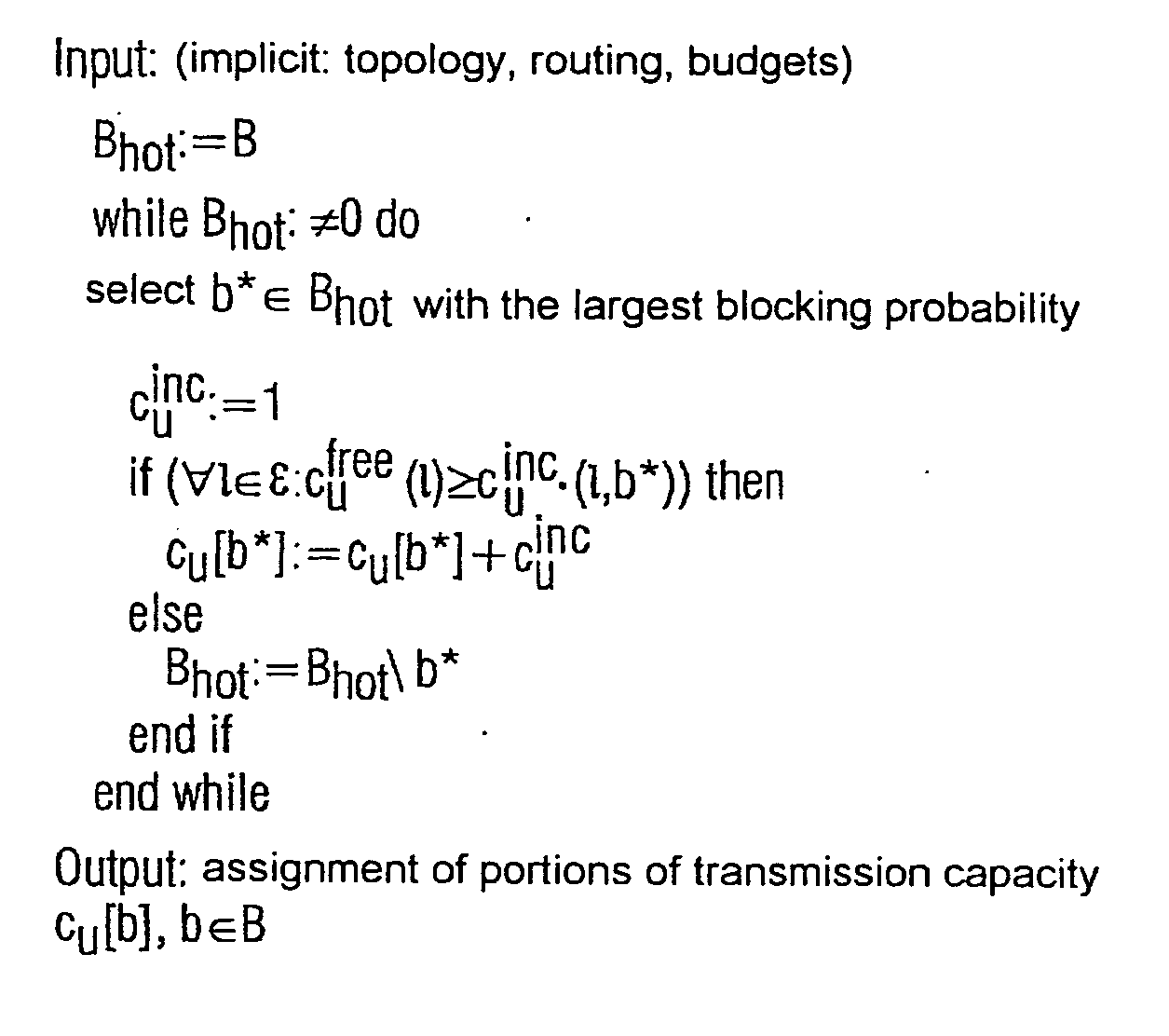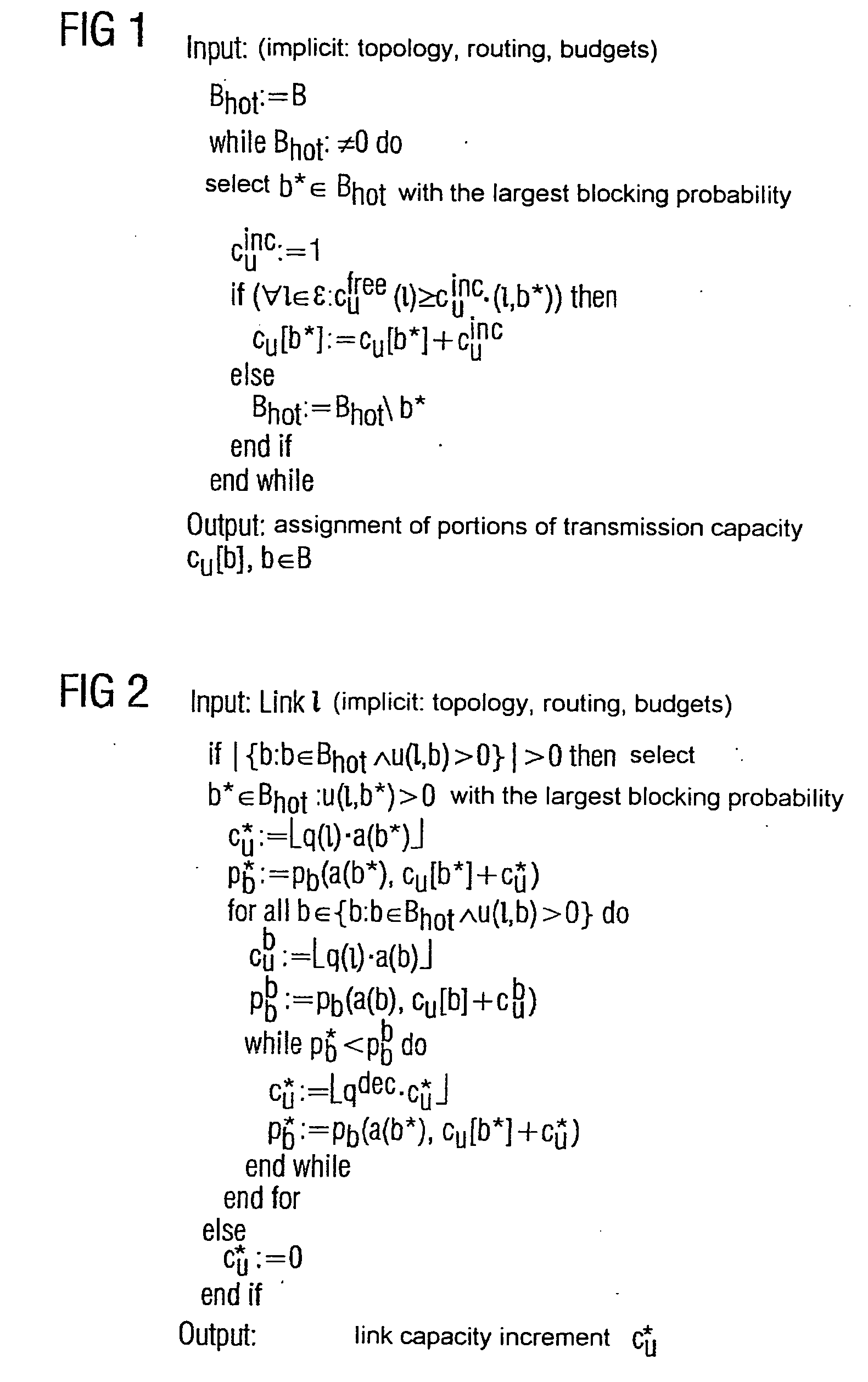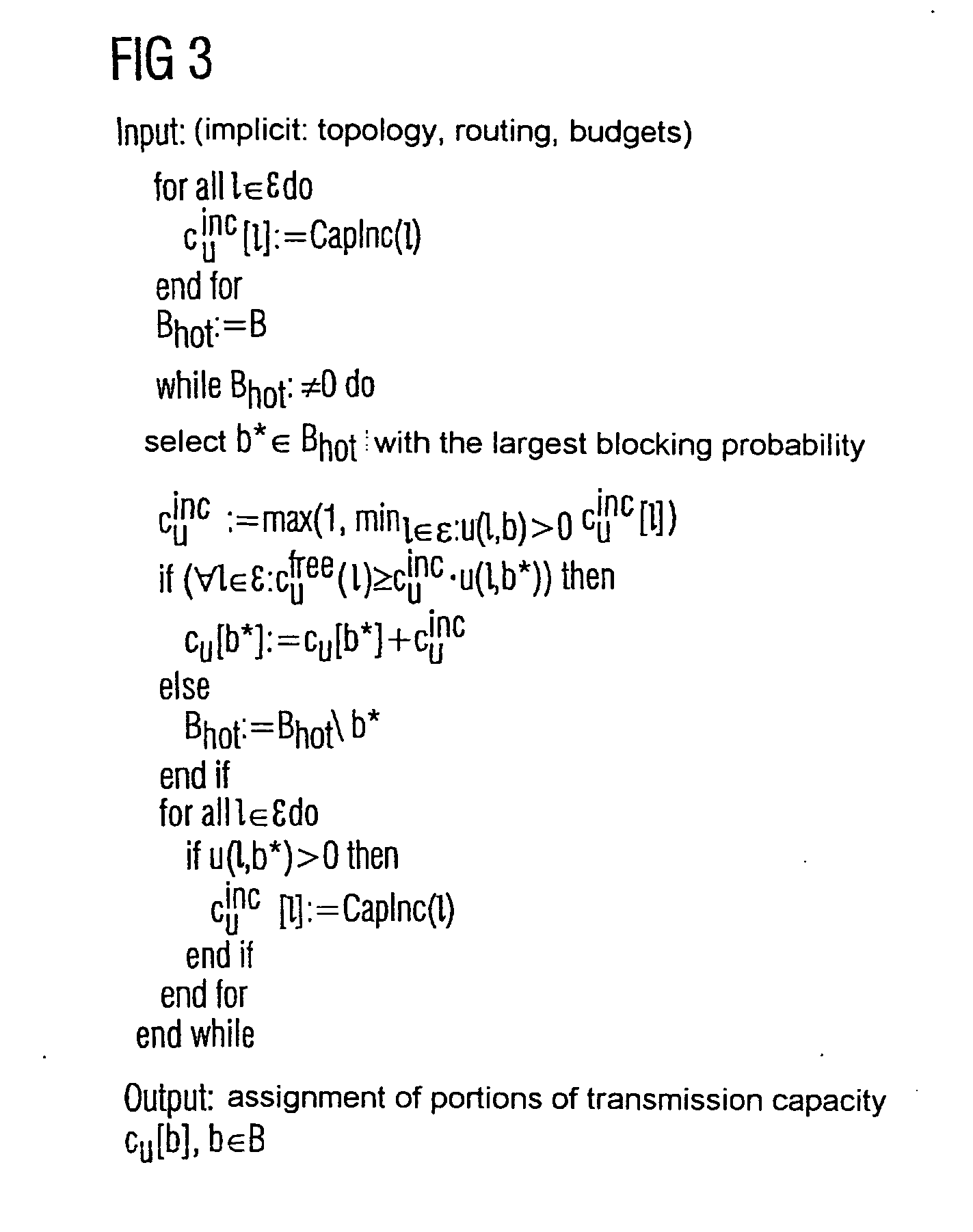Method for determining threshold values for traffic control in communication networks with admission control
a technology of communication network and threshold value, applied in the field of determining the threshold value of traffic control in communication network with admission control, can solve the problems of low flexibility, high complexity of methods, and the inability to guarantee the preservation of service attributes for real-time traffic for data transmission using diff-serv concepts, so as to prevent bottlenecks and reduce the quality of services
- Summary
- Abstract
- Description
- Claims
- Application Information
AI Technical Summary
Benefits of technology
Problems solved by technology
Method used
Image
Examples
Embodiment Construction
[0022] We proceed on the assumption of a communication network which subjects traffic to be transported to admission controls. In the context of the example, admission controls are differentiated according to the ingress point and egress point of the traffic to be transported, each pair of ingress and egress points (i.e. two edge points or edge nodes) being assigned a threshold value (or budget) for the permissible traffic. This threshold value corresponds to a maximum transmission capacity available to the traffic to be transported between the associated end points. The described procedure for limiting the transmission capacity allows better distribution and control of the traffic streams transported in the communication network.
[0023] The issue addressed by the invention is how the threshold values for the admission controls are to be suitably selected, i.e. which capacities are to be reserved on the links of the communication network for the individual admission controls, i.e. f...
PUM
 Login to View More
Login to View More Abstract
Description
Claims
Application Information
 Login to View More
Login to View More - R&D
- Intellectual Property
- Life Sciences
- Materials
- Tech Scout
- Unparalleled Data Quality
- Higher Quality Content
- 60% Fewer Hallucinations
Browse by: Latest US Patents, China's latest patents, Technical Efficacy Thesaurus, Application Domain, Technology Topic, Popular Technical Reports.
© 2025 PatSnap. All rights reserved.Legal|Privacy policy|Modern Slavery Act Transparency Statement|Sitemap|About US| Contact US: help@patsnap.com



